|
Saturday the 30th I
headed south as usual. My first stop was near the Boundary Bay
Airport on 72nd Street in Delta, looking again for the Ash-throated
Flycatcher. I hadn't been entirely satisfied with my previous
photos of it. I got there around 11am and was greeted by a Northern
Harrier who flew over me on his way west.
I searched up and down
the hedgerow for about half an hour before locating the flycatcher.
But I did find him, and the light was much better than last time
I was there. Here's the elusive little fellow.
|
|
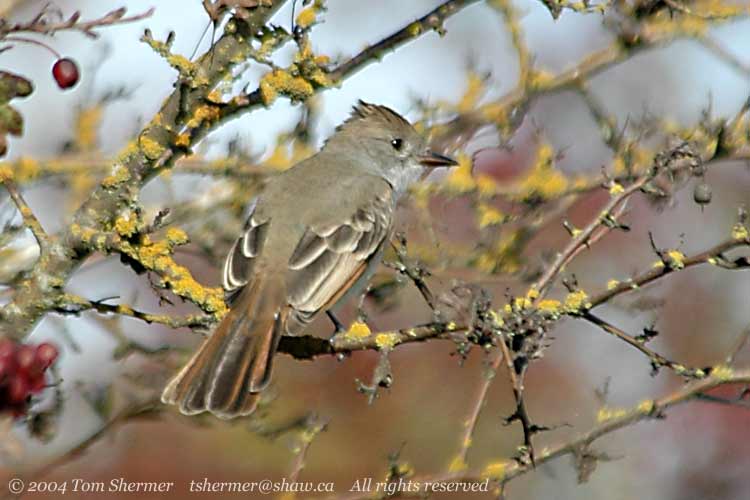 |
|
I was also going to
look for a Bohemian Waxwing, but decided to head on to lunch instead,
as I hadn't had breakfast that morning. On my way back to the
car, a Red-tailed Hawk flew over.
|
|
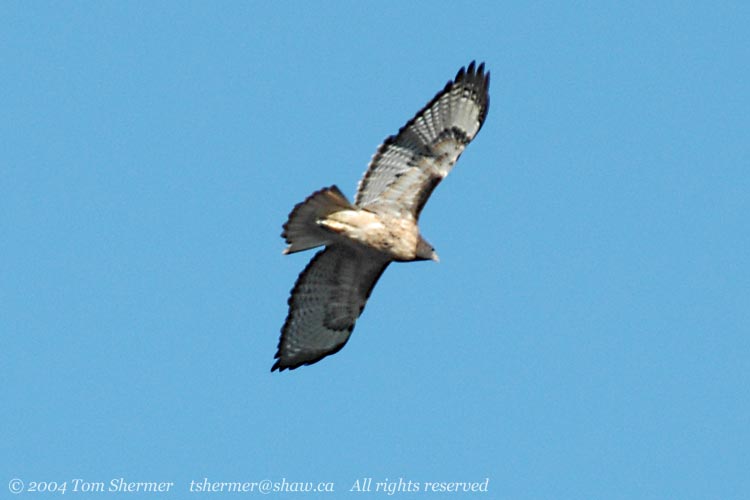 |
|
After lunch in Ladner,
I headed over to Reifel. Proceeding along the east edge, I stopped
when I saw what I thought was a Mountain Chickadee. It was a small,
flitting bird with a light stripe over the eye.
When the bird got close
to me, though, I noticed that it had a reddish breast. This meant
that it wasn't a chickadee. It turns out that I was looking at
a Red-breasted Nuthatch...and he was looking back at me
|
|
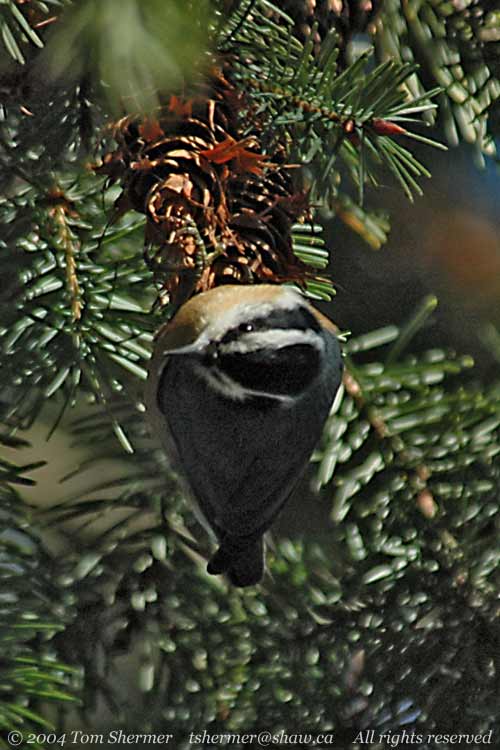 |
|
Mostly, though, he
was was hanging upside-down and picking at that pinecone. He was
a lifer for me.
After the nuthatch,
I turned off the east path and headed for the center of the refuge.
There I found a few Buffleheads and decided to work on getting
photos of them. Male Buffleheads are tough photographic subjects,
with broad areas of both black and white on them, and I don't
think that I've yet taken a close-up photo of one that I'm happy
with. The white parts of the duck tend to overexpose.
|
|
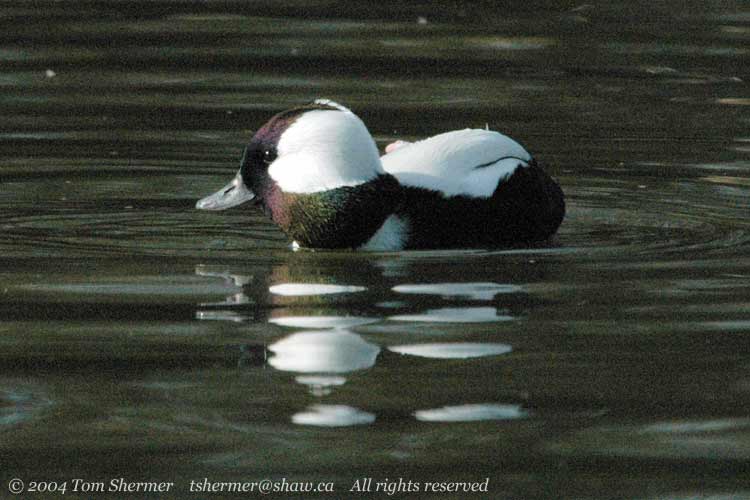 |
|
At some angles, one
can see purple and green iridescence in the black plumage of the
Bufflehead, as in the above photo.
Here's one preening.
I was attracted to the abstract shape of the white parts of the
bird in this photo. Even so, the white is still a bit too bright
on his flanks.
|
|
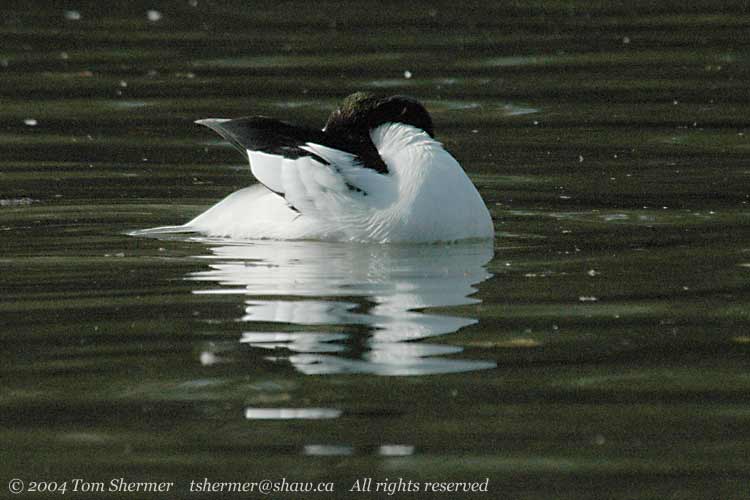 |
| Perhaps
the best Bufflehead shot of the day was this one, of two males. |
|
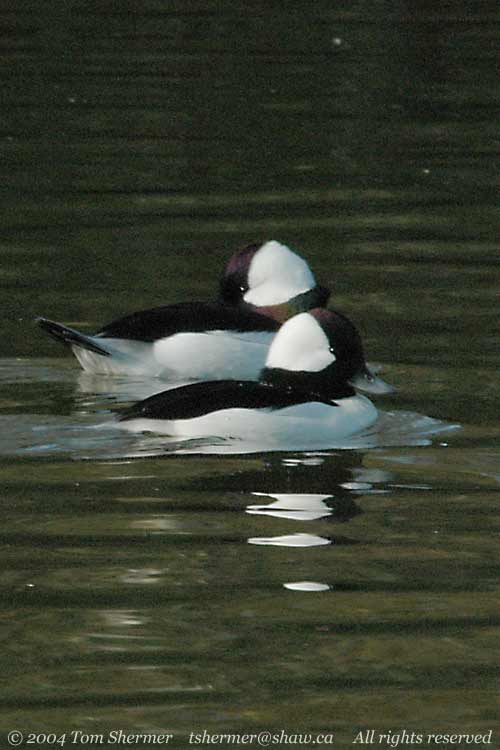 |
|
Buffleheads are diving
ducks, and it was a bit frustrating to try to get shots of them
floating around, as they were always diving under. So I decided
I'd try to get shots of them diving as well as floating. Here's
a two-shot sequence of one taking the plunge.
|
|
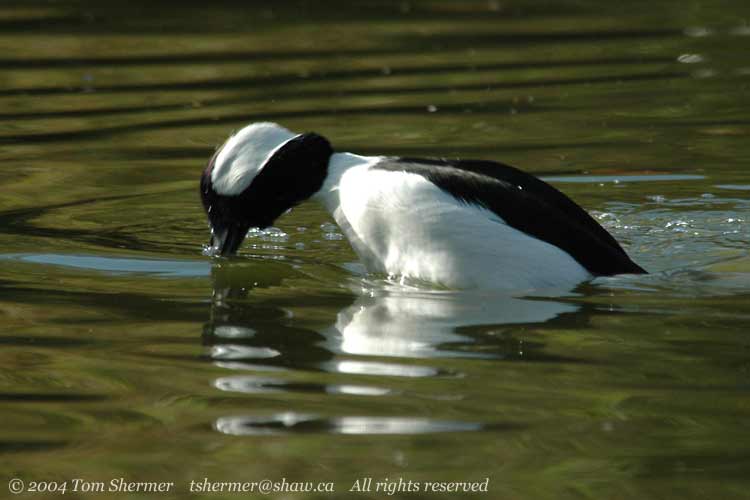 |
| |
|
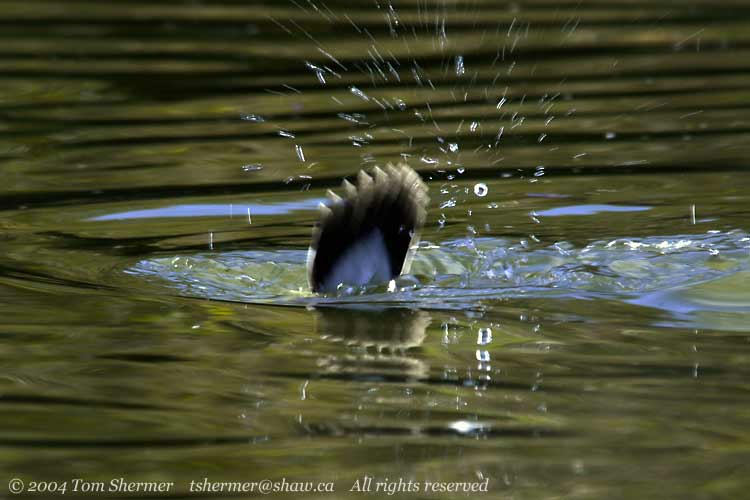 |
|
I also took a few shots
of the female Buffleheads, like this one who came up to talk to
me. It turns out that she wasn't the only duck to take this approach
with me this day.
|
|
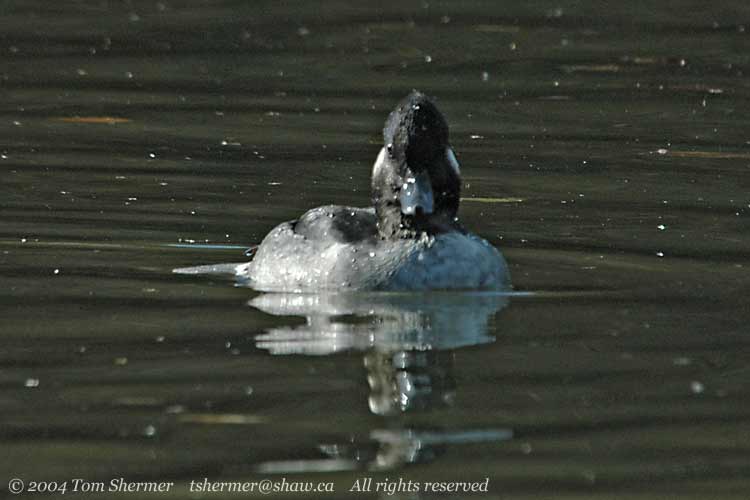 |
|
I also noticed a few
male Canvasbacks out on the pond--those of the evil red eyes.
These guys were much closer than the ones from the other day at
Iona.
|
|
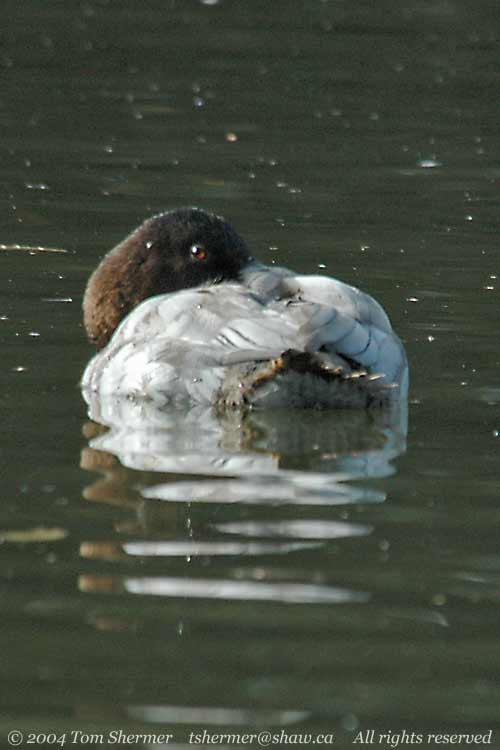 |
|
What I didn't know
about Canvasbacks is that they have white eyelids.
|
|
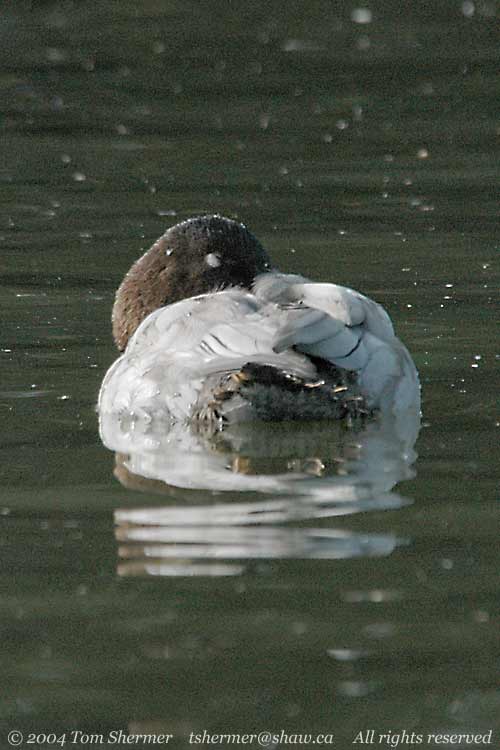 |
|
A bunch of sparrows
were foraging on the ground nearby. I took a few shots of them,
including this one of an immature White-crowned.
|
|
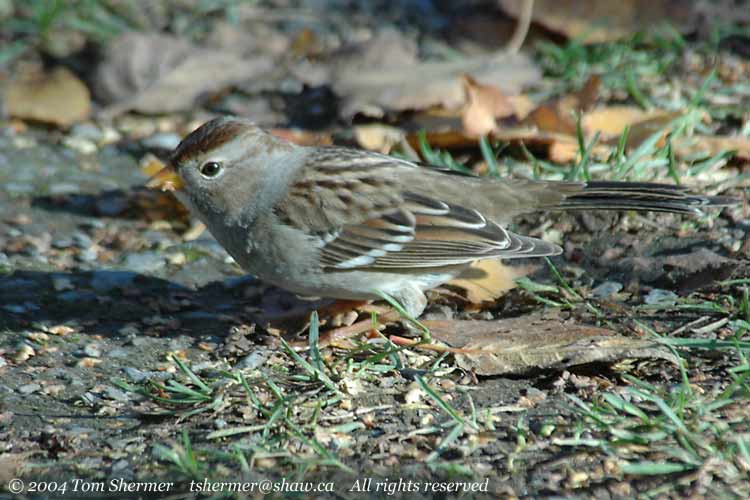 |
| I walked
to the north as a few scattered flights of Snow Geese flew over,
honking. On the outer dyke, I saw a harrier hunting over the bullrushes
and took a few dark, distant photos of him. In the lagoon to my
left, there was a pair of Gadwalls. Here's the male. |
|
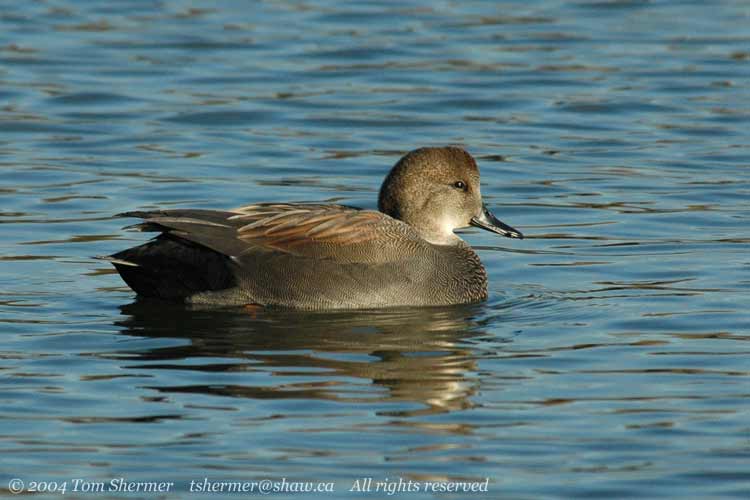 |
|
The Gadwalls swam away
past some dowitchers and I proceeded along the outer dyke. I was
now at the west end of the refuge, heading south. I stopped when
I encountered a group of about four people who had stopped to
observe a group of about four Sandhill Cranes. The cranes were
milling around in the water and on the shore at the foot of the
dyke.
|
|
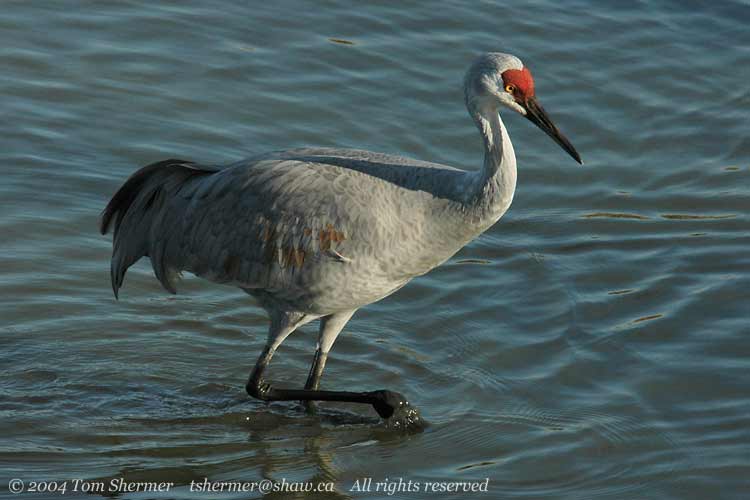 |
|
Sandhills make great
subjects; they don't seem to shy away from humans at all. At least,
the ones at Reifel are that way; perhaps other ones are more shy.
I don't have any experience with them outside of the refuge, aside
from a few that I've seen flying over me.
|
|
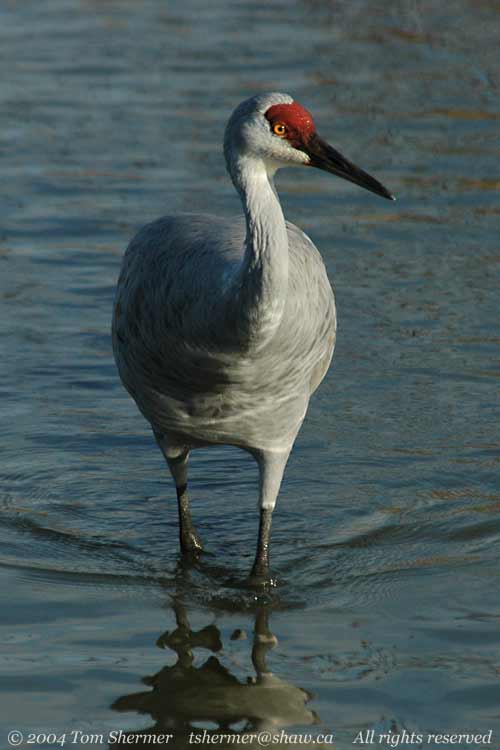 |
| These ones
were good and close, and I got a few good head shots. |
|
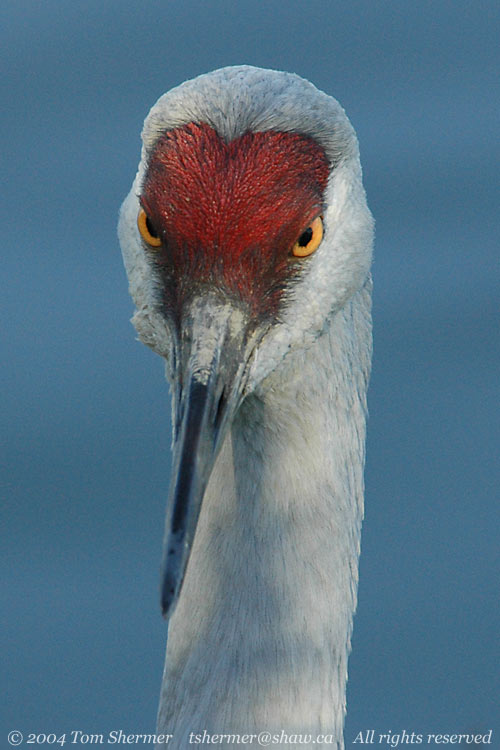 |
|
I continued my walk
south to the path that leads from the outer dyke back towards
the center of the sanctuary. There I found a pair of what appeared
to be duck wings, which was all that remained of a bird who probably
fell prey to one of the local raptors.
|
|
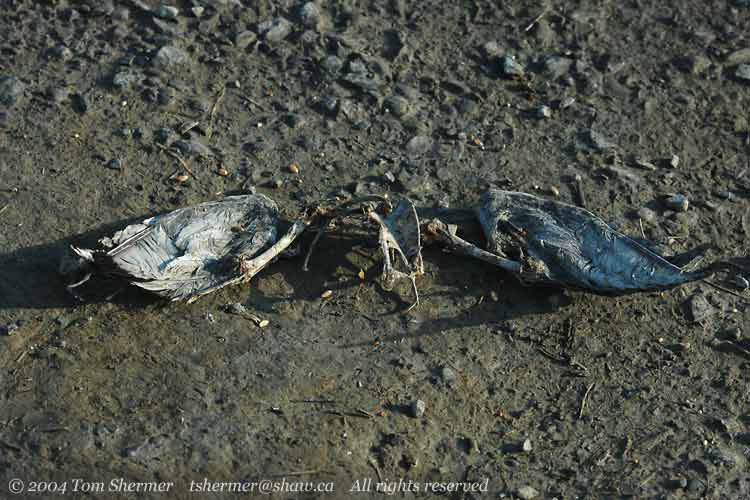 |
|
I was a bit tired,
so I took the opportunity to sit for a while on a bench near the
path junction. The bench had a good view over a pond where a lot
of ducks were paddling around, and I was able to photograph said
ducks from said bench. The ducks included ten or fifteen Lesser
Scaups, like this fellow.
|
|
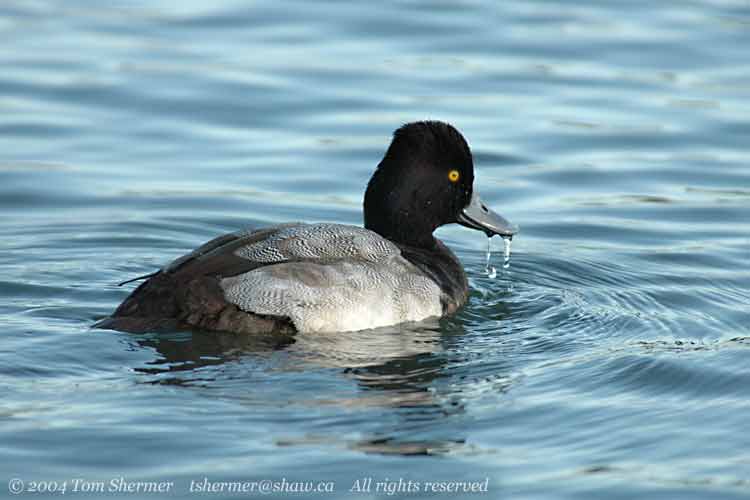 |
|
He didn't really like
all of the attention I was paying to him, so he steamed over to
give me a piece of his mind.
|
|
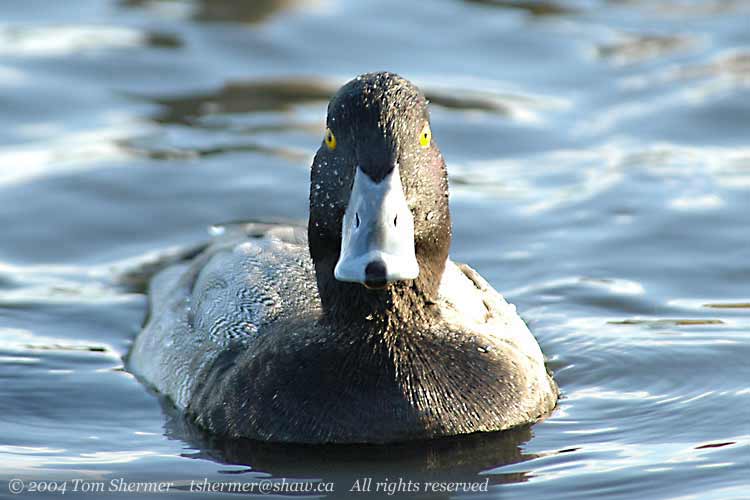 |
| It seems
that he and his lady had big dreams of flying free, just going up
into the sky and seeing where the wind would take them. He didn't
want me interfering with any of that. |
|
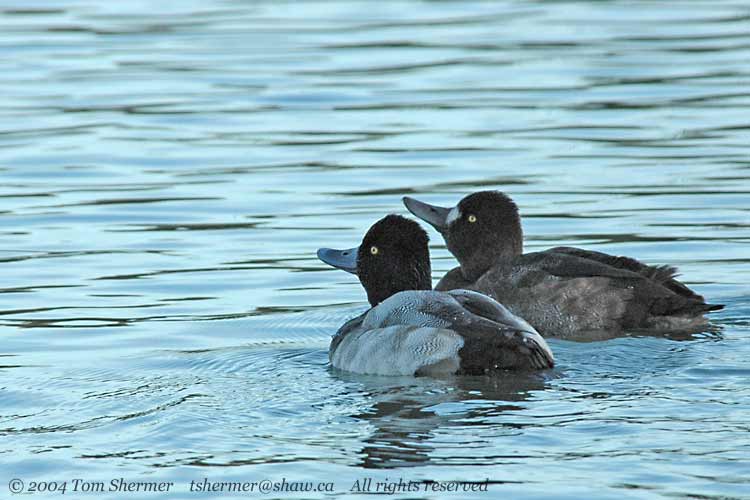 |
|
Well, I told him that
I didn't want to intrude, and that the photos wouldn't come out
until after they were long gone, anyway. That seemed to settle
him some, although he never really came back close to the bench
afterwards.
On the other hand,
there was a pair of American Wigeons near me, on the lip of the
pond, who were hanging around patiently, just waiting for me to
take their photo.
|
|
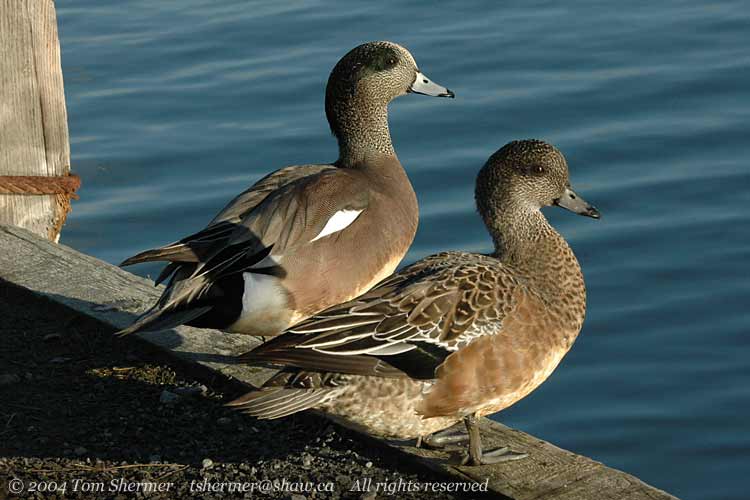 |
|
They gave me about
five minutes of shooting, and then jumped in and headed off southward.
I had had a good little
rest, so I got up and promptly noticed that the view behind where
I had been sitting included the four Sandhill Cranes. Now I had
enough distance on them to get all four into one photo. Unfortunately,
the light on them wasn't ideal.
|
|
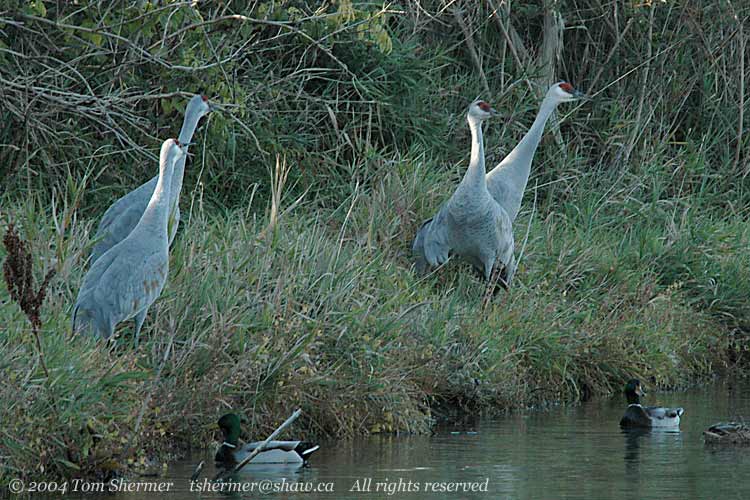 |
|
I started vaguely back
in the direction of the parking lot. About halfway back, I came
to a path intersection where a Ruby-crowned Kinglet was flitting
around. These little guys don't sit still long, and I played catch-a-photo-of-the-kinglet
with him for about five minutes. If you're not familiar with this
game, the photographer scores one point for every clear photo
of the kinglet, and the kinglet scores one point for every blurry
or bad photo and for every photo of the branch where the kinglet
used to be. We started out pretty even (I was even up 3 to 2 at
one point), but then he stopped fooling around and beat me 20
to 8. Here's one of my eight.
|
|
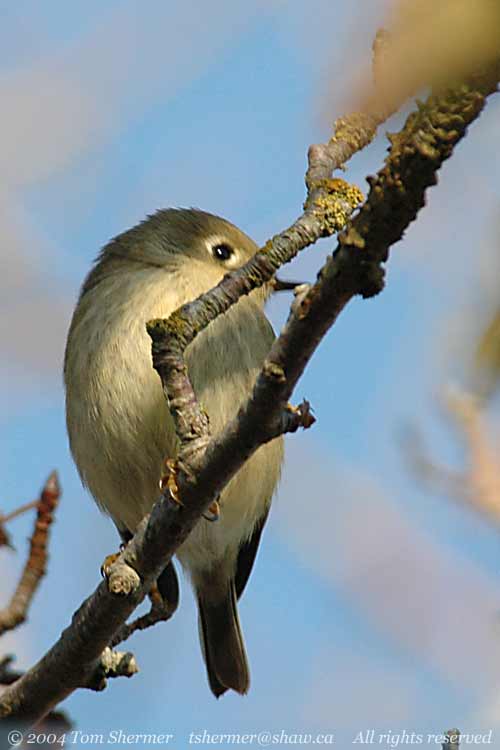 |
| From the
intersection, I saw a few male Hooded Mergansers in the water and
decided to spend some time photographing them. Unfortunately, the
sun was getting pretty low and the mergansers were keeping to the
shade, so I got really long exposure times. Out of over a hundred
photos, only a handful came out okay, and even these were fairly
grainy. Here's one of the better ones. |
|
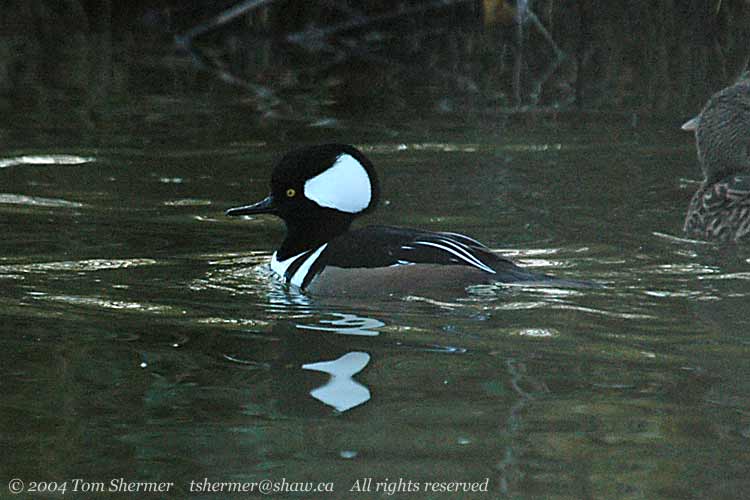 |
| Another
one of the decent shots was the following, in which I caught one
of the hoodies doing a little flappage. That's a female Mallard
behind him, making his wing look a little long. I thought about
painting her out of the photo, but that seemed too radical of an
alteration. |
|
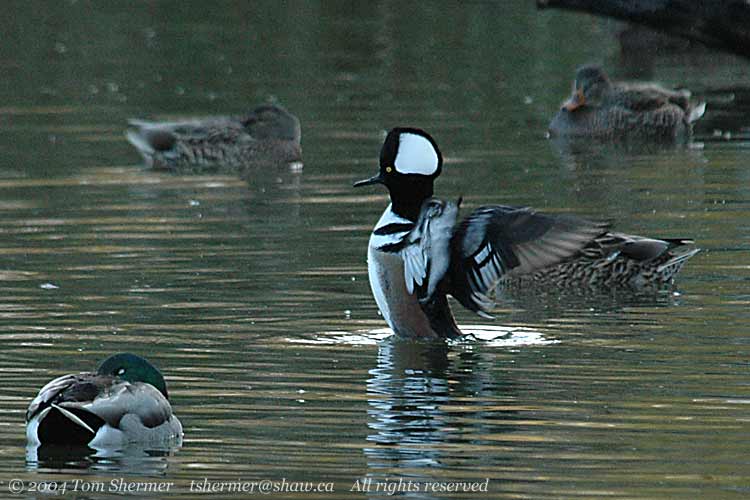 |
|
After about twenty
minutes with the Hooded Mergansers, I called it a day. I made
it back to the car without further incident and headed home to
save my photos and get ready for Sunday.
Needing more practice
at catch-a-photo-of-the-kinglet,
Tom
|
|